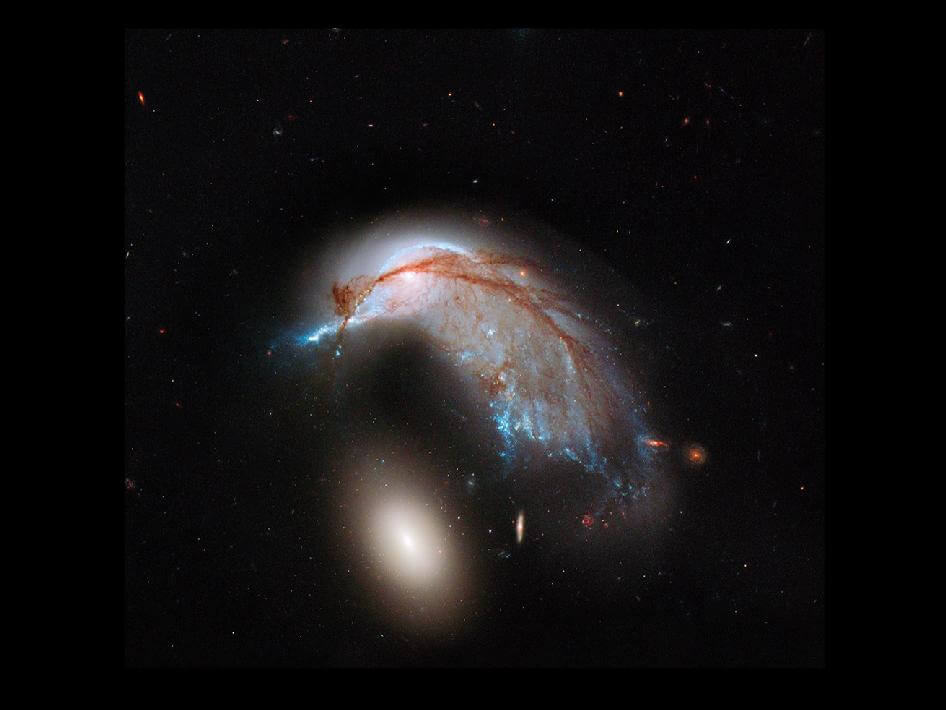The Hubble Space Telescope has photographed two unusually approaching galaxies

The Hubble Space Telescope produced this vivid image of a pair of galaxies known as 142 Arp in the process of colliding. When these two galaxies got too close to each other they began to react to each other, causing spectacular changes in both. In some of the regions the galaxies are getting closer to merging, while in other parts they are being torn apart.
Just below the center of the image is the distorted blue shape of the galaxy NGC 2936, one of the two galaxies that make up Arp 142 in the Hydra group and is also known as the penguin or dolphin by amateur astronomers. NGC 2936 was a standard spiral galaxy before it was torn apart by the gravitational pull of its cosmic companion.
The remains of the spiral structure can still be seen - with the galactic bulge forming the penguin's eye. Hints of the swirling arms of the galaxy can still be seen all around. These jagged arms form the body of this cosmic bird and are seen as blue and red stripes across the image. These streaks descend in a knot towards NGC 2936's companion galaxy – the elliptical galaxy NGC 2937, seen here as a bright white ellipse. The pair's shape resembles a penguin hatching on its egg.
The effect of intergalactic attraction can be devastating. A pair of Arp 142 are close enough to cause violent collisions, exchange matter, and wreak havoc.
At the top of the image you see two bright stars, both of which are in the Milky Way ahead of the pair. One of them is surrounded by a trail of shimmering blue material. In fact it is another galaxy. This galaxy is too distant to play a role in the collision. The same is true for the galaxies that appear to fill the body of NGC 2936. In the background, you can see elongated blue and red formations of many other galaxies that are far away from us but can be viewed with the sharp optical means of the Hubble Space Telescope.
The pair of galaxies are named after the American astronomer Halton Earp, creator of the Atlas of Peculiar Galaxies published in 1966. Earp compiled the catalog in order to understand how galaxies evolve and change shape over time, something he felt was only partially understood. He chose his targets based on their strange external shape, but astronomers later realized that many of the objects in the ARP catalog were actually galaxies in the process of interacting or even merging.

One response
Full size image:
http://www.nasa.gov/images/content/756581main_hubble_colliding_galaxies_full_full.jpg